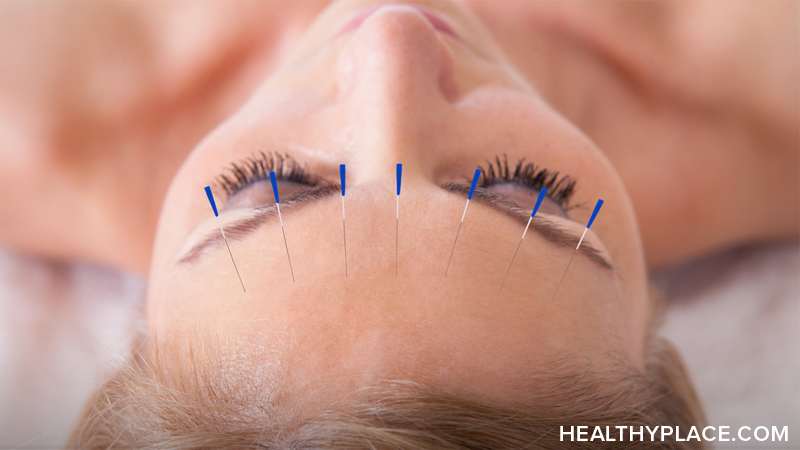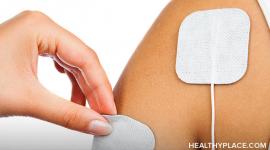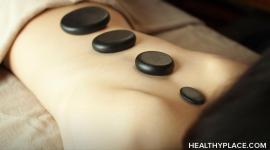Types of Alternative Medicine

Learn about the different types of alternative medicine including Chinese medicine, Ayurvedic medicine, naturopathy, homeopathy.
On this page
- Introduction
- Traditional Chinese Medicine
- Ayurvedic Medicine
- Naturopathy
- Homeopathy
- Summary
- For More Information
- References
Introduction
Whole medical systems involve complete systems of theory and practice that have evolved independently from or parallel to allopathic (conventional) medicine. Many are traditional systems of medicine that are practiced by individual cultures throughout the world. Major Eastern whole medical systems include traditional Chinese medicine (TCM) and Ayurvedic medicine, one of India's traditional systems of medicine. Major Western whole medical systems include homeopathy and naturopathy. Other systems have been developed by Native American, African, Middle Eastern, Tibetan, and Central and South American cultures.
Traditional Chinese Medicine
TCM is a complete system of healing that dates back to 200 B.C. in written form. Korea, Japan, and Vietnam have all developed their own unique versions of traditional medicine based on practices originating in China. In the TCM view, the body is a delicate balance of two opposing and inseparable forces: yin and yang. Yin represents the cold, slow, or passive principle, while yang represents the hot, excited, or active principle. Among the major assumptions in TCM are that health is achieved by maintaining the body in a "balanced state" and that disease is due to an internal imbalance of yin and yang. This imbalance leads to blockage in the flow of qi (or vital energy) and of blood along pathways known as meridians. TCM practitioners typically use herbs, acupuncture, and massage to help unblock qi and blood in patients in an attempt to bring the body back into harmony and wellness.
Treatments in TCM are typically tailored to the subtle patterns of disharmony in each patient and are based on an individualized diagnosis. The diagnostic tools differ from those of conventional medicine. There are three main therapeutic modalities:
- Acupuncture and moxibustion (moxibustion is the application of heat from the burning of the herb moxa at the acupuncture point)
- Chinese Materia Medica (the catalogue of natural products used in TCM)
- Massage and manipulation
Although TCM proposes that natural products catalogued in Chinese Materia Medica or acupuncture can be used alone to treat virtually any illness, quite often they are used together and sometimes in combination with other modalities (e.g., massage, moxibustion, diet changes, or exercise).
The scientific evidence on selected modalities from TCM is discussed below.
Acupuncture: The report from a Consensus Development Conference on Acupuncture held at the National Institutes of Health (NIH) in 1997 states that acupuncture is being "widely" practiced--by thousands of acupuncturists, physicians, dentists, and other practitioners--for relief or prevention of pain and for various other health conditions.1 In terms of the evidence at that time, acupuncture was considered to have potential clinical value for nausea/vomiting and dental pain, and limited evidence suggested its potential in the treatment of other pain disorders, paralysis and numbness, movement disorders, depression, insomnia, breathlessness, and asthma.
Preclinical studies have documented acupuncture's effects, but they have not been able to fully explain how acupuncture works within the framework of the Western system of medicine.
It is proposed that acupuncture produces its effects by the conduction of electromagnetic signals at a greater-than-normal rate, thus aiding the activity of pain-killing biochemicals, such as endorphins and immune system cells at specific sites in the body. In addition, studies have shown that acupuncture may alter brain chemistry by changing the release of neurotransmitters and neurohormones and affecting the parts of the central nervous system related to sensation and involuntary body functions, such as immune reactions and processes whereby a person's blood pressure, blood flow, and body temperature are regulated.2,3
Chinese Materia Medica
Chinese Materia Medica is a standard reference book of information on medicinal substances that are used in Chinese herbal medicine.4 Herbs or botanicals usually contain dozens of bioactive compounds. Many factors--such as geographic location, harvest season, post-harvest processing, and storage--could have a significant impact on the concentration of bioactive compounds. In many cases, it is not clear which of these compounds underlie an herb's medical use. Moreover, multiple herbs are usually used in combinations called formulas in TCM, which makes the standardization of herbal preparations very difficult. Further complicating research on TCM herbs, herbal compositions and the quantity of individual herbs in a classic formula are usually adjusted in TCM practice according to individualized diagnoses.
In the past decades, major efforts have been made to study the effects and effectiveness of single herbs and of combinations of herbs used in classic TCM formulas. The following are examples of such work:
-
Artemisia annua. Ancient Chinese physicians identified that this herb controls fevers. In the 1970s, scientists extracted the chemical artemisinin from Artemisia annua. Artemisinin is the starting material for the semi-synthetic artemisinins that are proven to treat malaria and are widely used.5
-
Tripterygium wilfordii Hook F (Chinese Thunder God vine). Thunder God vine has been used in TCM for the treatment of autoimmune and inflammatory diseases. The first small randomized, placebo-controlled trial of a Thunder God vine extract in the United States showed a significant dose-dependent response in patients with rheumatoid arthritis.6 In larger, uncontrolled studies, however, renal, cardiac, hematopoietic, and reproductive toxicities of Thunder God vine extracts have been observed.
Ayurvedic Medicine
Ayurveda, which literally means "the science of life," is a natural healing system developed in India. Ayurvedic texts claim that the sages who developed India's original systems of meditation and yoga developed the foundations of this medical system. It is a comprehensive system of medicine that places equal emphasis on the body, mind, and spirit, and strives to restore the innate harmony of the individual. Some of the primary Ayurvedic treatments include diet, exercise, meditation, herbs, massage, exposure to sunlight, and controlled breathing. In India, Ayurvedic treatments have been developed for various diseases (e.g., diabetes, cardiovascular conditions, and neurological disorders). However, a survey of the Indian medical literature indicates that the quality of the published clinical trials generally falls short of contemporary methodological standards with regard to criteria for randomization, sample size, and adequate controls.7
Naturopathy
Naturopathy is a system of healing, originating from Europe, that views disease as a manifestation of alterations in the processes by which the body naturally heals itself. It emphasizes health restoration as well as disease treatment. The term "naturopathy" literally translates as "nature disease." Today naturopathy, or naturopathic medicine, is practiced throughout Europe, Australia, New Zealand, Canada, and the United States. There are six principles that form the basis of naturopathic practice in North America (not all are unique to naturopathy):
- The healing power of nature
- Identification and treatment of the cause of disease
- The concept of "first do no harm"
- The doctor as teacher
- Treatment of the whole person
- Prevention
The core modalities supporting these principles include diet modification and nutritional supplements, herbal medicine, acupuncture and Chinese medicine, hydrotherapy, massage and joint manipulation, and lifestyle counseling. Treatment protocols combine what the practitioner deems to be the most suitable therapies for the individual patient.8
As of this writing, virtually no research studies on naturopathy as a complete system of medicine have been published. A limited number of studies on botanicals in the context of use as naturopathic treatments have been published. For example, in a study of 524 children, echinacea did not prove effective in treating colds.9 In contrast, a smaller, double-blind trial of an herbal extract solution containing echinacea, propolis (a resinous product collected from beehives), and vitamin C for ear pain in 171 children concluded that the extract may be beneficial for ear pain associated with acute otitis media.10 A naturopathic extract known as Otikon Otic Solution (containing Allium sativum, Verbascum thapsus, Calendula flores, and Hypericum perforatum in olive oil) was found as effective as anesthetic ear drops and was proven appropriate for the management of acute otitis media-associated ear pain.11 Another study looked at the clinical effectiveness and cost-effectiveness of naturopathic cranberry tablets--versus cranberry juice and versus a placebo--as prophylaxis against urinary tract infections (UTIs). Compared with the placebo, both cranberry juice and cranberry tablets decreased the number of UTIs. Cranberry tablets proved to be the most cost-effective prevention for UTIs.12
Homeopathy
Homeopathy is a complete system of medical theory and practice. Its founder, German physician Samuel Christian Hahnemann (1755-1843), hypothesized that one can select therapies on the basis of how closely symptoms produced by a remedy match the symptoms of the patient's disease. He called this the "principle of similars." Hahnemann proceeded to give repeated doses of many common remedies to healthy volunteers and carefully record the symptoms they produced. This procedure is called a "proving" or, in modern homeopathy, a "human pathogenic trial." As a result of this experience, Hahnemann developed his treatments for sick patients by matching the symptoms produced by a drug to symptoms in sick patients.13 Hahnemann emphasized from the beginning carefully examining all aspects of a person's health status, including emotional and mental states, and tiny idiosyncratic characteristics.
Since homeopathy is administered in minute or potentially nonexistent material dosages, there is an a priori skepticism in the scientific community about its efficacy. Nonetheless, the medical literature provides evidence of ongoing research in the field. Studies of homeopathy's effectiveness involve three areas of research:
- Comparisons of homeopathic remedies and placebos
- Studies of homeopathy's effectiveness for particular clinical conditions
- Studies of the biological effects of potencies, especially ultra-high dilutions
Five systematic reviews and meta-analyses evaluated clinical trials of the effectiveness of homeopathic remedies as compared with placebo. The reviews found that, overall, the quality of clinical research in homeopathy is low. But when high-quality studies were selected for analysis, a surprising number showed positive results.13-17
Overall, clinical trial results are contradictory, and systematic reviews and meta-analyses have not found homeopathy to be a definitively proven treatment for any medical condition.
Summary
While whole medical systems differ in their philosophical approaches to the prevention and treatment of disease, they share a number of common elements. These systems are based on the belief that one's body has the power to heal itself. Healing often involves marshalling multiple techniques that involve the mind, body, and spirit. Treatment is often individualized and dependent on the presenting symptoms. To date, NCCAM's research efforts have focused on individual therapies with adequate experimental rationale and not on evaluating whole systems of medicine as they are commonly practiced.
NCCAM Clearinghouse
The NCCAM Clearinghouse provides information on CAM and on NCCAM, including publications and searches of Federal databases of scientific and medical literature. The Clearinghouse does not provide medical advice, treatment recommendations, or referrals to practitioners.
NCCAM Clearinghouse
Toll-free in the U.S.: 1-888-644-6226
International: 301-519-3153
TTY (for deaf and hard-of-hearing callers): 1-866-464-3615
E-mail: info@nccam.nih.gov
Web site: www.nccam.nih.gov
About This Series
"Biologically Based Practices: An Overview" is one of five background reports on the major areas of complementary and alternative medicine (CAM).
The series was prepared as part of the National Center for Complementary and Alternative Medicine's (NCCAM's) strategic planning efforts for the years 2005 to 2009. These brief reports should not be viewed as comprehensive or definitive reviews. Rather, they are intended to provide a sense of the overarching research challenges and opportunities in particular CAM approaches. For further information on any of the therapies in this report, contact the NCCAM Clearinghouse.
NCCAM has provided this material for your information. It is not intended to substitute for the medical expertise and advice of your primary health care provider. We encourage you to discuss any decisions about treatment or care with your health care provider. The mention of any product, service, or therapy in this information is not an endorsement by NCCAM.
next: Alternative Approaches to Mental Health Care
References
- National Institutes of Health Consensus Panel. Acupuncture: National Institutes of Health Consensus Development Statement. National Center for Complementary and Alternative Medicine Web site. Accessed at odp.od.nih.gov/consensus/cons/107/107_statement.htm on April 30, 2004.
- Takeshige C. Mechanism of acupuncture analgesia based on animal experiments. In: Scientific Bases of Acupuncture. Berlin, Germany: Springer-Verlag; 1989.
- Lee BY, LaRiccia PJ, Newberg AB. Acupuncture in theory and practice. Hospital Physician. 2004;40:11-18.
- Bensky D, Gamble A. Chinese Herbal Medicine: Materia Medica. Rev ed. Seattle, WA: Eastland Press; 1993.
- Klayman DL. Qinghaosu (artemisinin): an antimalarial drug from China. Science. 1985;228(4703):1049-1055.
- Tao X, Younger J, Fan FZ, et al. Benefit of an extract of Tripterygium Wilfordii Hook F in patients with rheumatoid arthritis: a double-blind, placebo-controlled study. Arthritis and Rheumatism. 2002;46(7):1735-1743.
- Hardy ML. Research in Ayurveda: where do we go from here? Alternative Therapies in Health and Medicine. 2001;7(2):34-35.
- Smith MJ, Logan AC. Naturopathy. Medical Clinics of North America. 2002;86(1):173-184.
- Taylor JA, Weber W, Standish L, et al. Efficacy and safety of echinacea in treating upper respiratory tract infections in children: a randomized controlled trial. Journal of the American Medical Association. 2003;290(21):2824-2830.
- Sarrell EM, Cohen HA, Kahan E. Naturopathic treatment for ear pain in children. Pediatrics. 2003;111(5):e574-e579.
- Sarrell EM, Mandelberg A, Cohen HA. Efficacy of naturopathic extracts in the management of ear pain associated with acute otitis media. Archives of Pediatric & Adolescent Medicine. 2001;155(7):796-799.
- Stothers L. A randomized trial to evaluate effectiveness and cost effectiveness of naturopathic cranberry products as prophylaxis against urinary tract infection in women. Canadian Journal of Urology. 2002;9(3):1558-1562.
- Jonas WB, Kaptchuk TJ, Linde K. A critical overview of homeopathy. Annals of Internal Medicine. 2003;138(5):393-399.
- Linde K, Clausius N, Ramirez G, et al. Are the clinical effects of homeopathy placebo effects? A meta-analysis of placebo-controlled trials. Lancet. 1997;350(9081):834-843.
- Kleijnen J, Knipschild P, ter Riet G. Clinical trials of homeopathy. British Medical Journal. 1991;302(6772):316-323.
- Mathie RT. The research evidence base for homeopathy: a fresh assessment of the literature. Homeopathy. 2003;92(2):84-91.
- Cucherat M, Haugh MC, Gooch M, et al. Evidence of clinical efficacy of homeopathy. A meta-analysis of clinical trials. HMRAG. Homeopathic Medicines Research Advisory Group. European Journal of Clinical Pharmacology. 2000;56(1):27-33.
APA Reference
Staff, H.
(2008, November 12). Types of Alternative Medicine, HealthyPlace. Retrieved
on 2025, December 5 from https://www.healthyplace.com/alternative-mental-health/treatments/types-of-alternative-medicine



